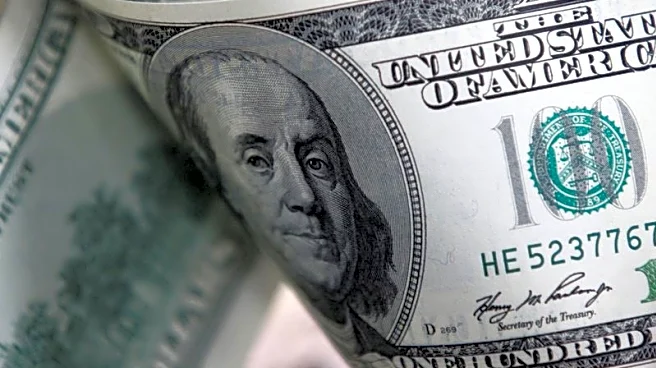What's Happening?
The U.S. dollar experienced fluctuations as investors anticipate upcoming labor market data that could influence the Federal Reserve's decision on interest rate cuts. The dollar rose slightly against the yen but showed a monthly decline against other currencies. Key data releases, including the U.S. nonfarm payrolls report, job openings, and private payrolls, are expected to provide insights into the labor market's health. Market expectations for a rate cut are high, with a potential 25 or 50 basis point reduction. The dollar's movement is also affected by concerns over Federal Reserve independence and ongoing trade tariff discussions.
Why It's Important?
The labor market data will play a crucial role in shaping monetary policy decisions, impacting interest rates and economic growth. A rate cut could stimulate economic activity but may also signal concerns about economic stability. The dollar's performance influences global trade and investment, affecting U.S. businesses and consumers. The legal challenges to President Trump's tariffs and his attempts to influence the Federal Reserve add layers of uncertainty to the economic landscape. Investors and policymakers are closely monitoring these developments to gauge future economic conditions.
What's Next?
Investors will focus on the upcoming labor market data releases to assess the likelihood and magnitude of a Federal Reserve rate cut. The court ruling on Trump's tariffs and his legal battle with the Federal Reserve may continue to impact market sentiment. Stakeholders will watch for any shifts in trade policy or monetary policy that could affect the dollar's value and broader economic conditions. The Federal Reserve's decisions will be scrutinized for their implications on inflation, employment, and economic growth.













